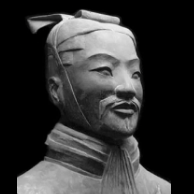Behind the Curtain: How the U.S. Helped Avert War Between India and Pakistan
-
Recently Browsing 0 members
- No registered users viewing this page.
-
Topics
-
Popular Contributors
-
Latest posts...
-
12
Will you be getting boosted now that Covid is back in the headlines in Thailand?
So there should be a fourth option ie. "No i'm following the science" -
93
So where did you meet your Thai girlfriend or wife?
There is no obligation to answer any questions on here -
151
Health Six Dead as Covid Cases Surge in Thailand
indeed they are, a fact not wasted on certain factions. the media for starters, and any others that seek to profit. It will always be this way -
4,406
-
116
Healthy 1 year old girl dies of multi seizures less than 12 hours after receiving 6 vaccines
Sounds like you don't understand how vaccines work. One child died, which is tragic, but if people didn't vaccinate, a lot more children would die. Your logic is extremely flawed. Child dies in house fire within hours of smoke alarm being installed and causing an electrical fault. Do not install smoke alarms in houses with children.... ........ This is the kind of interstellar-grade stupidity we're up against in these anti-vax threads. A child tragically dies after a vaccine, and the brilliant solution? 'Let’s bring back polio for everyone!' - Brilliant... -
93
So where did you meet your Thai girlfriend or wife?
Tokyo-(Wife) 40+ years ago
-
-
Popular in The Pub
-







.thumb.jpeg.d2d19a66404642fd9ff62d6262fd153e.jpeg)



Recommended Posts
Create an account or sign in to comment
You need to be a member in order to leave a comment
Create an account
Sign up for a new account in our community. It's easy!
Register a new accountSign in
Already have an account? Sign in here.
Sign In Now